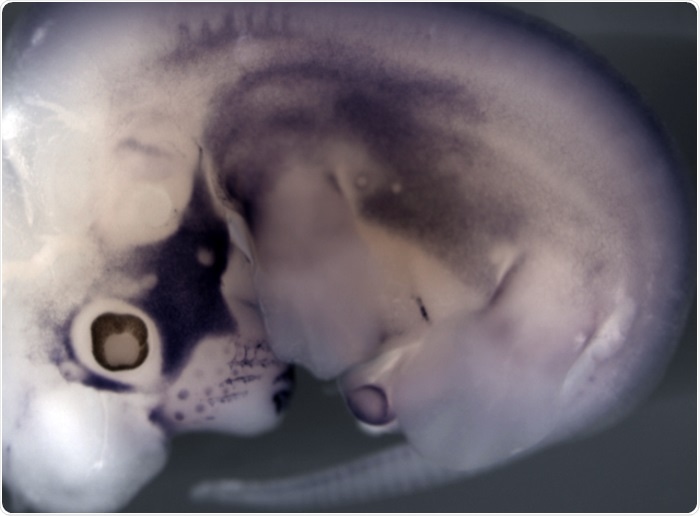Human genome mapping was followed by rapid scientific advancements that showed the astonishingly complex world of genetics. It is a known fact that proteins are not just gene products, but they also communicate with genes, influencing and controlling their expression.

A mouse embryo. Image Credit: Denis Duboule (EPFL/UniGe).
A classic instance is transcription factors, which initiate the transcription of genes from DNA into mRNA—the initial step of protein synthesis.
Researchers were on the lookout for answers to questions like how do genes “know” when to turn on, what to make, and when to stop. They also wanted answers to the questions like how do genes work as part of intricate molecular machinery without being confused with other nearby genes.
These questions triggered the current research by Professor Denis Duboule, who runs research groups at EPFL and the University of Geneva. The study was published in the Genes & Development journal.
Rita Amandio, Leo Beccari, and their coworkers from this lab were fascinated by a specific zinc finger protein called CTCF. It is unusual as it is a multifunctional protein and based on the cell’s requirements, it can either turn on gene transcription or suppress it.
The genome consists of specific sites where CTCF attaches and performs a major role in the packaging of DNA in the cell’s nucleus as chromatin. The scientists were intrigued by the fact that CTCF and its binding sites can also hinder the communication between short DNA sequences called gene enhancers and gene promoters.
Enhancers are the sequences where activator proteins attach to enhance gene transcription, and promoters are where transcription factors attach to initiate the mechanism.
The scientists employed a strategy based on CRISPR/Cas9 technology to sabotage five adjacent locations where CTCFs attach to the genome, to regulate the activation of a family of genes called the HoxD cluster.
These genes code for proteins that are crucial in organizing the structures at the time of the development in the mammalian embryo. The transcription factors are also greatly conserved—they do not vary substantially across vertebrate species.
The research revealed that for enhancers to be able to select the correct sub-groups of target genes, the CTCF-binding sites within Hox clusters are important, particularly if those enhancers are remote and not nearby their target genes.
The study also discovered that due to the dual function of CTCF, all its binding sites do not act to facilitate gene activation and some have an inhibitory effect on gene transcription. The dual roles depend on the kind of tissue where the genes operate. In other words, some CTCF binding sites can showcase opposite activities in various tissues.
The research found that even though the CTCF sites within the Hox cluster perform multiple roles, they together contribute to the formation of a “TAD border” (topologically associated domain). This is a defined region on the genome where the genes interact with each other, facilitating the organization of the huge complexity of the “genetic dance.”
The researchers sum up by stating, “The variety of tasks uncovered for these CTCF sites may explain their amazing evolutionary conservation amongst the Hox clusters of all vertebrates.”
Source:
Journal reference:
Amândio, A. R., et al. (2021) Sequential in-cis mutagenesis in vivo reveals various functions for CTCF sites at the mouse HoxD cluster. Genes & Development. doi.org/10.1101/2021.08.13.456193.